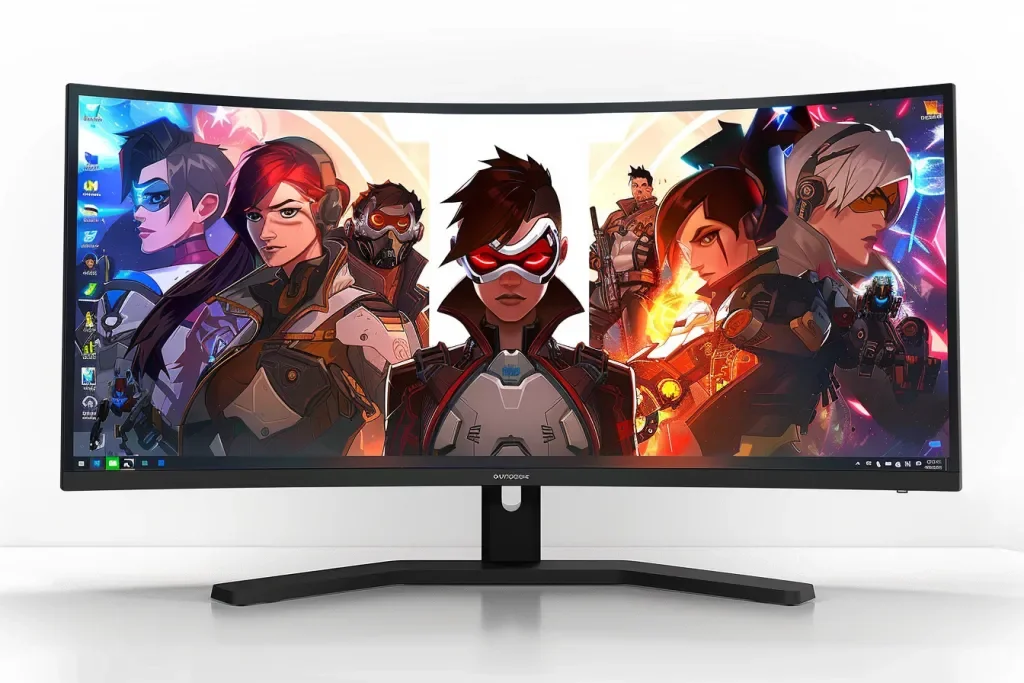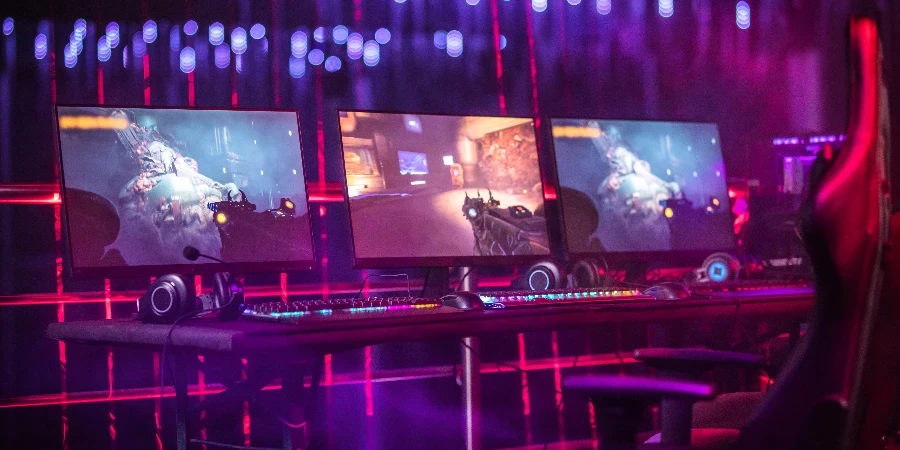When it comes to immersive gaming, the quality of your monitor can make all the difference. Gaming monitors are designed to elevate your gameplay, offering superior image quality, faster response times, and a slew of features aimed at enhancing your gaming experience. This article explores everything you need to know about gaming monitors, from how they work to choosing the right one for you.
Table of Contents:
– What is a gaming monitor?
– How does a gaming monitor work?
– Benefits and drawbacks of gaming monitors
– How to choose a gaming monitor
– How to use a gaming monitor
What is a gaming monitor?

Gaming monitors are specialized displays designed to meet the demands of video game graphics. Unlike standard monitors, they are engineered with gaming-specific features such as higher refresh rates, quicker response times, and adaptive sync technologies. These features aim to provide a smoother, more immersive gaming experience by reducing motion blur, tearing, and other visual artifacts that can detract from gameplay.
Gaming monitors come in various sizes, resolutions, and panel types, each offering different benefits for gaming. For instance, higher resolutions deliver sharper images, but require more powerful graphics hardware to maintain high frame rates. Panel technology, such as TN (Twisted Nematic), IPS (In-Plane Switching), and VA (Vertical Alignment), affects color reproduction, viewing angles, and contrast ratios, impacting how games look on the screen.
The evolution of gaming monitors has been driven by the increasing demands of modern video games and the gaming community’s desire for more immersive and visually stunning experiences. As games become more graphically intensive, the need for high-performance monitors that can keep up with fast-paced action and render detailed environments becomes essential.
How does a gaming monitor work?

At its core, a gaming monitor functions by displaying the output from your computer’s graphics card. The monitor’s refresh rate, measured in Hertz (Hz), dictates how many times per second the display can update with new images. Higher refresh rates result in smoother motion, making them crucial for fast-paced games where quick reactions are key.
Response time is another critical factor in how gaming monitors work. Measured in milliseconds (ms), it refers to how quickly a monitor can change pixels from one color to another. Lower response times help to eliminate ghosting and blurring, enhancing the clarity of fast-moving images.
Adaptive sync technologies, such as NVIDIA’s G-SYNC and AMD’s FreeSync, synchronize the monitor’s refresh rate with the graphics card’s frame rate. This synchronization eliminates screen tearing and stuttering, providing a smoother gaming experience. These technologies require compatible graphics cards and monitors, emphasizing the importance of ensuring hardware compatibility when setting up a gaming system.
Benefits and drawbacks of gaming monitors

The primary benefit of gaming monitors is their ability to provide a more responsive, immersive gaming experience. High refresh rates and low response times make for smoother gameplay, while adaptive sync technologies eliminate distracting screen tearing and stuttering. Moreover, gaming monitors often come with features like HDR (High Dynamic Range) for better contrast and color accuracy, enhancing the visual quality of games.
However, gaming monitors also have some drawbacks. High-performance models, especially those with the latest technologies and highest resolutions, can be expensive. Additionally, to fully benefit from a high-resolution, high-refresh-rate monitor, you’ll need a powerful graphics card, which could mean additional investment. Lastly, the variety of options and technical specifications can make choosing the right monitor daunting for less tech-savvy gamers.
How to choose a gaming monitor

Choosing the right gaming monitor involves considering several key factors. First, determine the resolution and screen size that best fit your gaming needs and space. While higher resolutions offer better image quality, they also require more from your graphics card. Screen size is largely a matter of personal preference and how immersive you want your gaming experience to be.
Next, consider the refresh rate and response time. For competitive gamers, monitors with refresh rates of 144Hz or higher and low response times are preferred for their smoothness and responsiveness. Panel type is also important; IPS panels offer better colors and viewing angles, while TN panels might offer faster response times but at the cost of color accuracy and viewing angles.
Lastly, think about additional features like adaptive sync technology, HDR support, and connectivity options. Your choice should align with your gaming setup and preferences, ensuring that your monitor enhances your overall gaming experience.
How to use a gaming monitor

To get the most out of your gaming monitor, first ensure it’s properly connected to your graphics card using the optimal port and cable—DisplayPort or HDMI 2.1 for newer, high-resolution monitors. Once connected, configure the monitor’s settings according to your preferences and the specifications of your hardware. This includes adjusting the refresh rate in your operating system’s display settings and enabling any adaptive sync features if available.
Calibrating your monitor’s color, brightness, and contrast settings is also crucial for achieving the best visual experience. Many monitors come with built-in presets for gaming, but manual adjustment may be necessary to match your specific gaming environment and preferences. Additionally, keeping your graphics card drivers up to date is essential for maintaining compatibility and performance with the latest games and monitor technologies.
Conclusion
Gaming monitors are essential for anyone looking to get the most out of their video gaming experience. They offer significant advantages in terms of responsiveness, image quality, and immersive gameplay. However, choosing and using the right gaming monitor requires understanding the technologies involved and how they match up with your gaming needs and hardware capabilities. By considering the factors outlined in this article, you can select a gaming monitor that enhances your gaming sessions and helps you to fully immerse yourself in the virtual worlds you explore.




